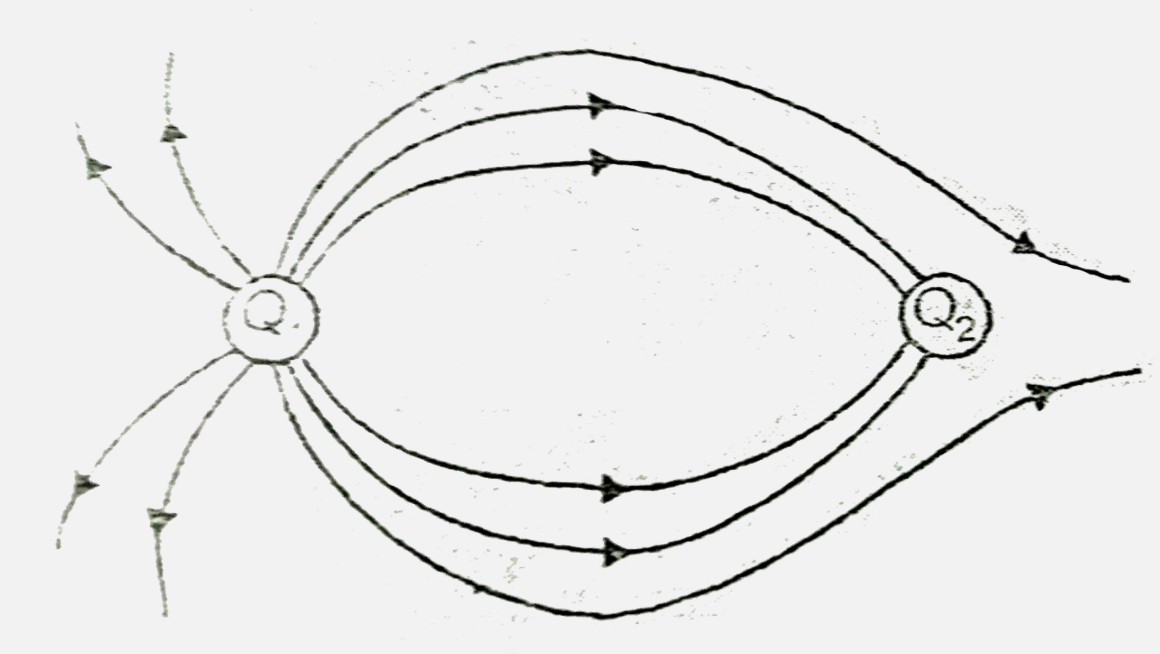The electric force between two electric charges is given by F=14πε0q1q2r2. where is a distance . between charges q1andq2 . So, unit and dimensional formula of ε0, is ...... and...... respectively.Solution in Gujrati
N1C2m−2,M−1L−3T4A2
N−1Cm−2,M−1L−1T−1A
N2C2m−2M−1L−3T4A2
NCm−2,MLTA
F=14πε0.q1q2r2
∴ε0=q1q24πFr2
∴ Units of ε0=C2Nm2=N−1C2m−2
[ε0]=[C2][N][m2]=A2T2(M1L1T−2)(L2)
=M−1L−3T4A2
Topper's Solved these Questions
- UNITS AND MEASUREMENTBOOK - KUMAR PRAKASHANCHAPTER - UNITS AND MEASUREMENTEXERCISE - Section -F (Questions from Module )
20 Videos
- UNITS AND MEASUREMENTBOOK - KUMAR PRAKASHANCHAPTER - UNITS AND MEASUREMENTEXERCISE - SECTION -D (NECERT EXEMPLAR SOLUTIONS) (Long Answer Type Questions)
9 Videos
- THERMODYANMICS BOOK - KUMAR PRAKASHANCHAPTER - THERMODYANMICS EXERCISE - Question Paper
11 Videos
- WAVESBOOK - KUMAR PRAKASHANCHAPTER - WAVESEXERCISE - SECTION-F (Questions From Module) (Sample questions for preparation of competitive exams)
23 Videos
Similar Questions
If the error in measurement of radius of a shpere is 2% then the error in determination of volume of the sphere will be …………
View SolutionA new system of units is proposed in which unit of mass is α kg, unit of length βm and unit of time γs. How much will 5J measure in this new system?
View SolutionWhy is a steam burn more damaging than a burn with boiling water of the same ?
View SolutionIn a standing wave formed by two atoms separated by 1.21Å, there are 3 nodes and 2 antinodes. Find its wavelength.
View SolutionWhen two charges q1andq2 are kept at some distance apart, force acting between these charges is F. If a third change q3 is placed quite close to q3 is placed quite close to q2 what will happen to the force between q1andq2 ?
View Solutionदो आवेशों q1 तथा q2 के बीच लगने वाला कूलॉम बल, F=q1q2r2 है। एक बल का मान -
View Solutionq1 और q2 इस प्रकार के बिंदु आवेश है कि q1×q2>0 दोनों आवेशों के बीच बल की क्या प्रकृति है?
View SolutionLooking at the various electric lines of forces between charges Q1 and Q2, find the value of Q1Q2.

View SolutionTwo large conducting sphere carrying charges Q1 and Q2 are brought close to each other. Is the magnitude of the electrostatic force between them exactly given by Q1Q2/4π∈0r2, where r is the distance between their centres ?
View Solutionयदि दो आवेशों q1 व q2 जो एक - दूसरे से दूरी r पर स्थित है के बीच लगने वाला बल F निम्नलिखित सूत्र द्वारा दिया जाता है :
F=14πε0×q1q2r2
तो ε0 का विमीय सूत्र ज्ञात कीजिए।
View SolutionThe electrostatic force between two point charges q_(1) and q_(2) at separation r is given by F= k. (q_(1)q_(2))/(r^(2)) . The constant k
View SolutionAnswer carefully:
(a) Two large conducting spheres carrying charges Q1 and Q2 are brought close to each other. Is the magnitude of electrostatic force between them exactly given by Q1,Q2/4πε0r2, where r is the distance between their centres?
(b) If Coulomb’s law involved 1/r3 dependence (instead of would Gauss’s law be still true ?
(c) A small test charge is released at rest at a point in an electrostatic field configuration. Will it travel along the field line passing through that point?
(d) What is the work done by the field of a nucleus in a complete circular orbit of the electron? What if the orbit is elliptical?
(e) We know that electric field is discontinuous across the surface of a charged conductor. Is electric potential also discontinuous there?
(f) What meaning would you give to the capacitance of a single conductor?
(g) Guess a possible reason why water has a much greater dielectric constant (= 80) than say, mica (= 6).
View SolutionElectric force between two point charges q_(1) and q_(2) at rest is F. Now is a charge -q_(1) is placed next to q_(1) . What will be the (a) force on q_(2) due to q_(1) (b) total force on q_(2) ?
View SolutionThe electric force between two electric charges is given by F= (1)/(4pi epsi_(0))(q_(1)q_(2))/(r^(2)) . where is a distance . between charges q_(1) and q_(2) . So, unit and dimensional formula of epsi_(0) , is ...... and...... respectively.
View SolutionThe electric force between two electric charges is given by F=k(q_(1)q_(2))/(r^(2)) where r is the distance between q_(1) and q_(2) . Give the dimensional formula of k.
View Solution
